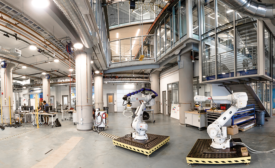Home » 3d printing
Articles Tagged with ''3d printing''
Design
Office Built Out of 3D-Printed Components Opens in Dubai
Demonstration Project Tests New Large-Scale 3D Printing Process
Read More
ENR FutureTech Shines With Innovations
Annual construction technology conference in San Francisco crackles with new ideas, advice, cautions and optimism
Read More
The latest news and information
#1 Source for Construction News, Data, Rankings, Analysis, and Commentary
JOIN ENR UNLIMITEDCopyright ©2024. All Rights Reserved BNP Media.
Design, CMS, Hosting & Web Development :: ePublishing















